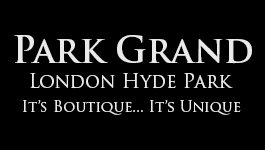London is well known for being a large city. Consisting of 1500 square kilometres and 32 boroughs, even the most fleeting of stays at Hyde Park Hotels in London will require you to use public transport at some point. A simple fact of the matter is that London is not built to be driven around, which is why the 402 kilometre London Underground is the most used mode of transport in the city.
As the oldest (1863) underground rail network in the world, the London Underground has had a long time to develop. This doesn;t just mean it's 12 lines and a dozen or so overground lines, but it's etiquette and technology too. These might take a little while for a first time guest of the Park Grand London Hyde Park to get used to, which is why this blog will offer some tips and tricks for surviving your first time on the London Underground.
An Overview
The London Underground or “the tube” is the name given to the underground network of rail lines that operate throughout London. Guests of accommodation Hyde Park London find many tube maps across the city and can also use digital map apps to navigate your journeys (those physicals can be rather confusing!). The London underground operates 12 tube lines and an Overground network across London. Last trains are at 12.30 and first trains are usually around 6 am. On the weekend however, 6 of the tube lines run 24 hour services at a reduced rate to accommodate the nighttime weekend economy.
Contactless Or Oyster?
Whilst physical tickets are available, it’s worth pointing out that the tube can be paid for by contactless payment cards and Oyster cards, which are much better value for money. This is especially the case for the blue top up Oyster cards, through which you can purchase daily, weekly and monthly travel cards that can save you money if you use it enough.
Avoid Peak Times
Whether you’re late for your reservation at restaurants in Hyde Park or you lost track of the time, using the tube during rush hour is sometimes a necessity. But if you can avoid it, you’ll be saving money too. The London Underground’s peak hours - when students and commuters are travelling to and from work - operate between 6.30 am and 9.30 am and between 4 pm and 7 pm. During these three hour periods, tube carriages are much busier and most lines run at a faster pace. Moreover, the strain on the system means that a single journey will cost about a third more than it does at off peak hours.
Respect People’s Space
Of course, it’s difficult to do if your train carriage is very crowded (such as during the aforementioned rush hour), but “man spreading” is a real thing. People in London value their privacy and won’t always want to chat with strangers on the tube. Of course, sometimes conversations arise naturally, but use your common sense when trying to talk to someone on the tube. Manners are always admired in London, and by extension London as well.
Stand On The Right
You heard it from the tannoy speakers first, but when using the escalator in London Underground stations, remember to stand on the right hand side to allow other passengers to walk the steps. This is especially important during rush hours when the stations are more crowded.
Share the post "Navigating London’s Public Transport"




















